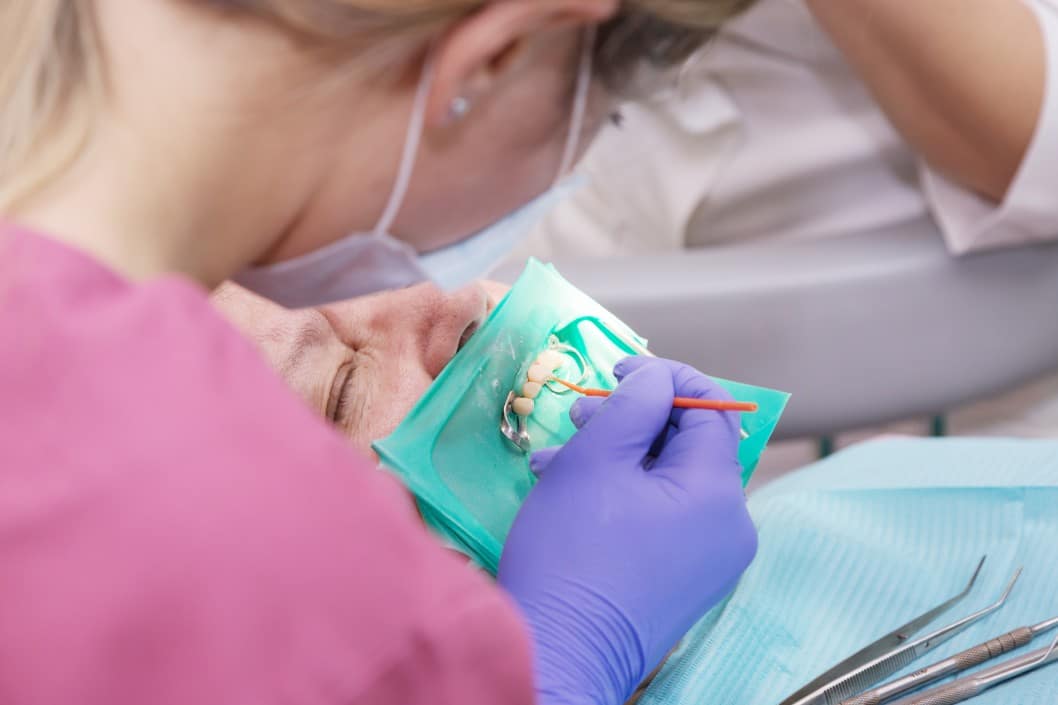There’s a huge demand for cosmetic dentistry globally and here in the U.S. Read on to discover market forecasts and trends for 2025 and beyond.
The Exponential Growth of the Cosmetic Dentistry Market
The cosmetic dentistry market is predicted to register a CAGR of 7.1 percent from 2018 to 2026. This exponential growth results from multiple factors, including increased desire and opportunity to access aesthetic dental treatments.
Cosmetic dental procedures include treatments that improve the appearance of a patient’s teeth, gums or bite. Standard procedures and treatments include
- Porcelain veneers
- Teeth whitening
- Crowns/implants
- Dental bonding
- Mouth Reconstruction
- Gum lifts
A beautiful smile affects a person’s confidence and self-worth and how others interact with them in personal and professional settings. People want a healthy, attractive smile. Cosmetic dentistry makes this possible. Below we explore the factors attributing to this growing market.
Market Drivers for Cosmetic Dentistry
As explained above, cosmetic dentistry is highly sought after –– perhaps more now than ever. Below are a few market drivers contributing to the sector’s significant growth.
Technological Advancements to Improve Diagnosis and Treatment
In recent years, technological improvements have transformed the way cosmetic dentists diagnose and prescribe treatments. We see a clear example of this in the shift from clay tooth impression to intraoral scanners.
Intraoral scanners are electronic devices that capture direct impressions of a patient’s teeth, mouth, and even jaw shape. The scanner projects light onto the area a dentist determines. Sensors capture that light and process the images with software. Imaging programs produce 3D surface models that providers use to analyze patients and create a care or treatment plan.
Intraoral scanners are just one example of the ways technological advancements are reshaping cosmetic dentistry. A shift toward a technology-centered dentistry culture allows providers to treat their patients and develop custom devices with greater precision than ever.
Increased Prevalence of Disease in Aging Population
A significant driver of the cosmetic dentistry market lies in the aging population. Medical innovations improve and extend life expectancy in older generations. That, combined with the large size of the Baby Boomer generation, results in a growing older population.
Recent research predicts that the number of Americans aged 65 and older will nearly double, from 52 million in 2018 to 95 million by 2060. With rising average lifespans, dental caries rises, especially in older patients. In addition, an increased prevalence of dental disease necessitates cosmetic dental treatments to address damage caused by oral health issues that often come with age.
The cosmetic dental market is seeing a rise in treatments for older patients. Because people who live longer seek cosmetic dentistry to improve their appearance even later in life. Cosmetic dentistry practices would be wise to cater to this demographic, providing specific services that appeal to an older population and address their unique needs.
Increased Demand for Teeth Whitening
White teeth are a sign of health and beauty, especially in the U.S., and people take many approaches to attain the perfect shade of bright white teeth. Teeth whitening practices have been around for years: from general dentistry bleaching trays to at-home methods of natural whitening –– some of which do more harm than good.
The current trend in teeth whitening is to make it seem like patients haven’t undergone whitening procedures. People want white teeth, but the market is trending away from bright white hues popular in the early 2000s. Now, individuals want white teeth that appear natural and healthy.
The pandemic brought about an increase in both personal and professional Zoom, Skype, and Facetime calls. As individuals spent more time seeing themselves on their screens, the demand for cosmetic procedures of all kinds skyrocketed –– from facials to Botox to teeth whitening. Those trends continue even now in the cosmetic dentistry industry.
The value of the teeth whitening industry is expected to jump from $6.6 billion in 2022 to $8.6 billion by 2028. High demand for whitening products and procedures and a desire for natural-looking results mean cosmetic dental offices must house the equipment and know-how to provide patients with effective, quality treatments.
Using AI to Predict Results
Patients seek cosmetic dentistry, knowing they want to see a change in their smile. However, injury, poor dental health, or even naturally misaligned teeth can result in dissatisfaction and insecurity among your patients.
And while many individuals know what they don’t like about their smile, it isn’t easy to imagine what their reflection might look like after cosmetic dentistry treatments. But with the help of dentistry-specific AI technology, providers can give patients a glimpse into their future.
Cosmetic dentistry offices now employ AI software to predict treatment and procedure results. This technology allows providers to give individuals realistic expectations regarding their dental treatment results. In addition, as tech continues to innovate, patients can see an accurate prediction of their smiles –– and even changes in their jawlines –– post-treatment.
In 2025, AI transformed how cosmetic dentists approach patient care and expectations. As a result, dentist offices see higher patient satisfaction due to more realistic predictive technology, and patients benefit from knowing what to expect when they commit to a treatment plan.
Using Patient Financing to Capitalize on a Growing Cosmetic Dentistry Market
While the need and desire for cosmetic dentistry continue to grow, many individuals do not have the resources to pay for treatment. Cosmetic dentistry procedures can cost tens of thousands of dollars. And because cosmetic services are elective, most insurance policies do not cover these costs. As a result, hopeful individuals must forego life-changing cosmetic dentistry care. Unfortunately, this is the reality for many individuals needing treatment without access to affordable, alternative payment methods.
A lack of financial resources creates barriers to cosmetic dental care and stifles market growth. But by offering patient financing for cosmetic dentistry services, you make care accessible. Affordable payment plans ensure that individuals seeking care from your practice can confidently proceed with their treatments. Financing options can increase appointment bookings and average order values. At the same time, you give your patients the peace of mind that they can easily afford a beautiful smile.
Providing alternative payment methods, like patient financing with fixed monthly payments and not a medical credit card with larger fees, allows cosmetic dental practices to take advantage of this healthy, growing market.
Conclusion
Everyone wants a smile they can be proud of. By understanding patients’ needs, desires, and demands, cosmetic dentistry practices can capitalize on a solid market and take steps toward sustainable, long-term growth.




